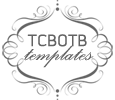Logic and proofs...the most
loathed favorite chapter! I love logic and I think my kids don't mind it too much. Proofs on the other hand...
My geometry teacher in high school didn't teach us anything about proofs, so when I went through college I struggled with proofs. I think that's because I wasn't exposed to it at all until then. Proofs can take a great deal of time to teach, so I try to balance it out the best I can. I teach my students about logic first and then will teach them the basic proof writing techniques and we'll do some basic proofs. Most of them are sure they're not going into any kind of field that requires math, but it's still good to show them because you just never know where their paths may go.
Logic
For logic, I start out by giving Rebus puzzles for them to think about for a while. They loved/hated these. They liked it when they understood the puzzle, but hated it when they couldn't figure it out. If you've never seen a Rebus puzzle before, here's an example of one.
The answer to this is first aid. Clever, huh? I love these puzzles.
Next year I hope to give them a few more logic puzzles and less Rebus puzzles.
We start out talking about what statements are. We discuss the hypothesis and conclusion of statements and talk about the fact that statements have a truth value. Then we talked about the ways you can change and combine statements by negations, conjunctions and disjunctions.
After this, we did a snowball activity. I love these! If you've never done one, here's how it works...
I had my students write a statement on a piece of paper. They then crumble it up and throw it in the middle of the room. When I say, they go grab a paper out of the middle and I'll tell them to find a partner. They have to then write the two statements, the negations, conjunction, and disjunction and give their truth values. After a few minutes, we crumble the papers back up and throw them back in the middle and go again with the same partner they had before. It doesn't matter if one of them gets the same statement they've had before because that could change the truth values depending on the other statements. We keep going a few times around until I feel like they get the hang of it pretty well.
Next we talked about conditional statements.
As we discuss conditional statements, we look at truth tables. I'm not going into detail about this because the only way to get truth tables is to practice them a bunch, which is what we did. We then talked about related conditionals.
For these lessons, I made a spinner and students had to spin twice to get two different statements. They then wrote the conditional and related conditionals for those two statements and gave the truth value.
This was a simple thing to make...paper plate, brad, and a homemade arrow out of cardstock. I think next year I'm going to have students make their own and they'll switch with another group so they statements are a lot more original and fun.
Next was deductive reasoning. Some people skip right over this, but I teach it anyways. I found an activity that goes along with understanding the laws of syllogism, detachment, and contrapositives on Teachers Pay Teachers
here. I do the activity first, and then we put notes in our notebooks over the 3 different laws.
Proofs
Once we finish logic, we start talking about proofs. I start out by taking a step back into algebra and discussing algebraic proofs. I review the properties of numbers with students first and they fill out these reference cards and keep them in their notebooks. Then, we go over a bunch of different algebraic proofs. I found an activity on Teachers Pay Teachers that is was a great resource to practice. Unfortunately that resource is no longer available there. Basically, it was a proofs cut and paste activity. I feel like my students really understood proof writing by the time we got to geometric proofs. We did very similar stuff for geometric proofs.




Last year when I taught proofs I felt as if I took way too much time to teach it and they still weren't understanding it very well, and those were advanced kids. This year I didn't take a terribly long time and I think my students got the idea of it a lot better. Proofs are one of those topics that can be very difficult to teach. Hopefully this gives you an idea of where to start. I'm always looking for ways to improve teaching this topic, so if you have any ideas about what I can do to improve this use Contact Me above or comment below. Happy teaching!




















































.jpg)
